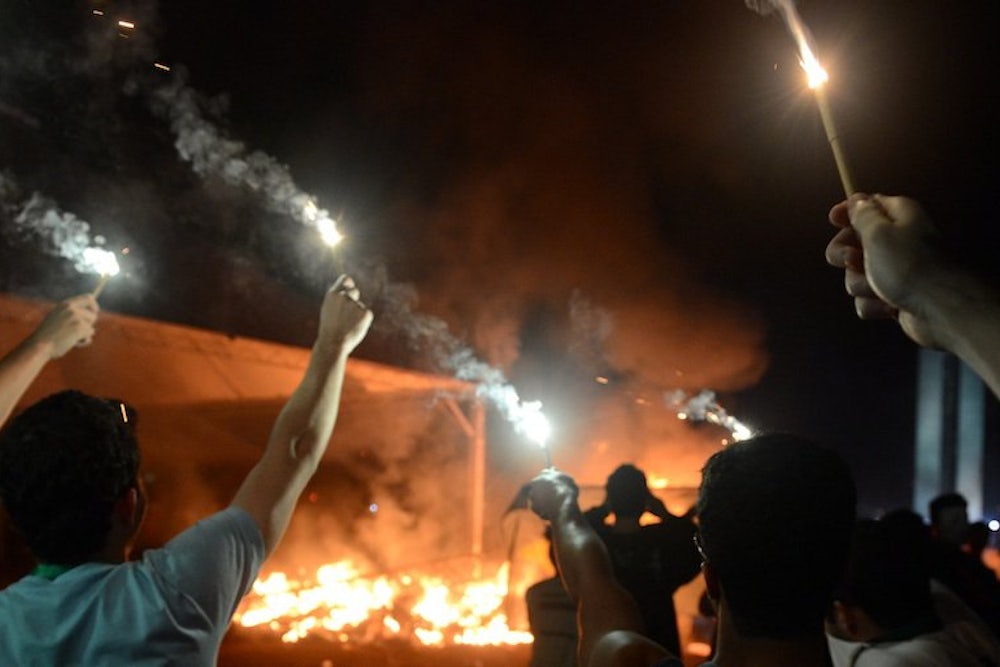The protests in Brazil, which have lasted a couple weeks and yesterday drew more than one million to the streets of the cities, are about a lot of things: the rising cost of living, corruption, mistreatment by police. But one of the prime grievances (since resolved) was a rise in subway and bus fares. So this was a battle in part over access to and movement through cities, much like the uproar over the planned renovation of Istanbul’s Taksim Square; the 2011 tent city in Tel Aviv prompted by the stratospheric cost of urban living in Israel; the use of Tahrir Square to launch the most consequential protest of the Arab Spring; and the occupation of a small park in the densest neighborhood of America’s densest, and biggest, city to protest economic inequality.
In our historic moment, social grievances are inextricably tied to urban living. And since the characteristic attribute of a city is density and the characteristic attribute of density is the flinging together of people from different walks of life, Brazil’s protests have engaged a broad swath of the population. “Middle class folks might say, ‘Brazil Has Woken Up,’” said Berkeley anthropologist James Holston, noting protesters’ signs. “Signs carried by people who are clearly poorer say, ‘The Periphery Was Never Asleep.’” He added: “What it shows is, as in Taksim Square and in other places, there’s a conjunction of class interests here, where really all classes except the super-rich have been squeezed, and this is at the heart of what’s going on.”
The revolt in Brazil, he added in a brief phone interview, “has to do with the quality of urban life, and it has to do with what you might call ‘right to the city,’ and the exercise of citizenship in urban space.”
Here’s a fun fact, taken from Holston’s 2008 book Insurgent Citizenship: Disjunctions of Democracy and Modernity in Brazil: From 1940 to 1980, the proportion of rural versus urban Brazilian residents almost exactly flipped, from 2:1 to 1:2. By 2000, more than four in five Brazilians lived in cities. What we are seeing now, argued Holston, is to no small extent a consequence of the massive (and in many cases forced) urbanization of the world’s fifth biggest country.
Even if urbanization is a global phenomenon, the specific contours of the protest are particular to Brazil. “When Brazil became urbanized, the masses of rural poor were forced to move to the cities and build the peripheries through a process called autoconstruction,” Holston explained. This process upended centuries of a static social order in which the majority were denied many rights. Brazil’s urbanization, then, was in one sense a major step forward for most Brazilians, providing, as Holston put it, “a new density of opportunity” that stemmed from the literal density of the way people actually lived.
But the dialectical result of this new density and these new nominal rights has been that as tremendous inequality has remained—and when it has been ostentatiously exacerbated by, say, hosting international prestige projects such as the World Cup Finals and the Summer Olympics—Brazilians in the satellite cities on the peripheries (and even poorer Brazilians in the favelas, the frequently illegal shanty towns which are almost like the peripheries of the peripheries) have grown angry that their economic rights have not caught up with their political rights.
When you add to this mix the fact that everyone now lives closer to each other—another opportunity borne of density—you have the recipe for these massive protests.
Ironically, Brazil’s leaders have long been unusually aware of this dynamic. In 1960, the (eventually overthrown) military dictatorship moved the federal capital from the iconic, bursting, organic city on the coast, Rio de Janeiro, to a brand-new, prefabricated city in the dead center of the country, Brasília. It was designed—by the great architect Oscar Niemeyer—to be the ultimate modern city. It is made for cars; it is largely bereft of public spaces. “It’s a city devoted to the delirium of speed, focused on the automobile, so if you don't have a car, you’re pretty much excluded from access to the city—public transportation has always been minimal,” Holston said.
He added, “The Modernist city was not supposed to have class divisions—working-class accommodations were not really provided, or if they were, they were so good they were usurped.” Reality clashed with planning, though, and the workers who had been shipped inland to build the city were forced then to build their own cities on the periphery. Now, 50-some years later, they, too, want in. Last night, protesters smashed the windows of the Congress building in central Brasília.
Follow @marcatracy.
An earlier version of this post spelled the professor's name James Holsten. It is Holston.
